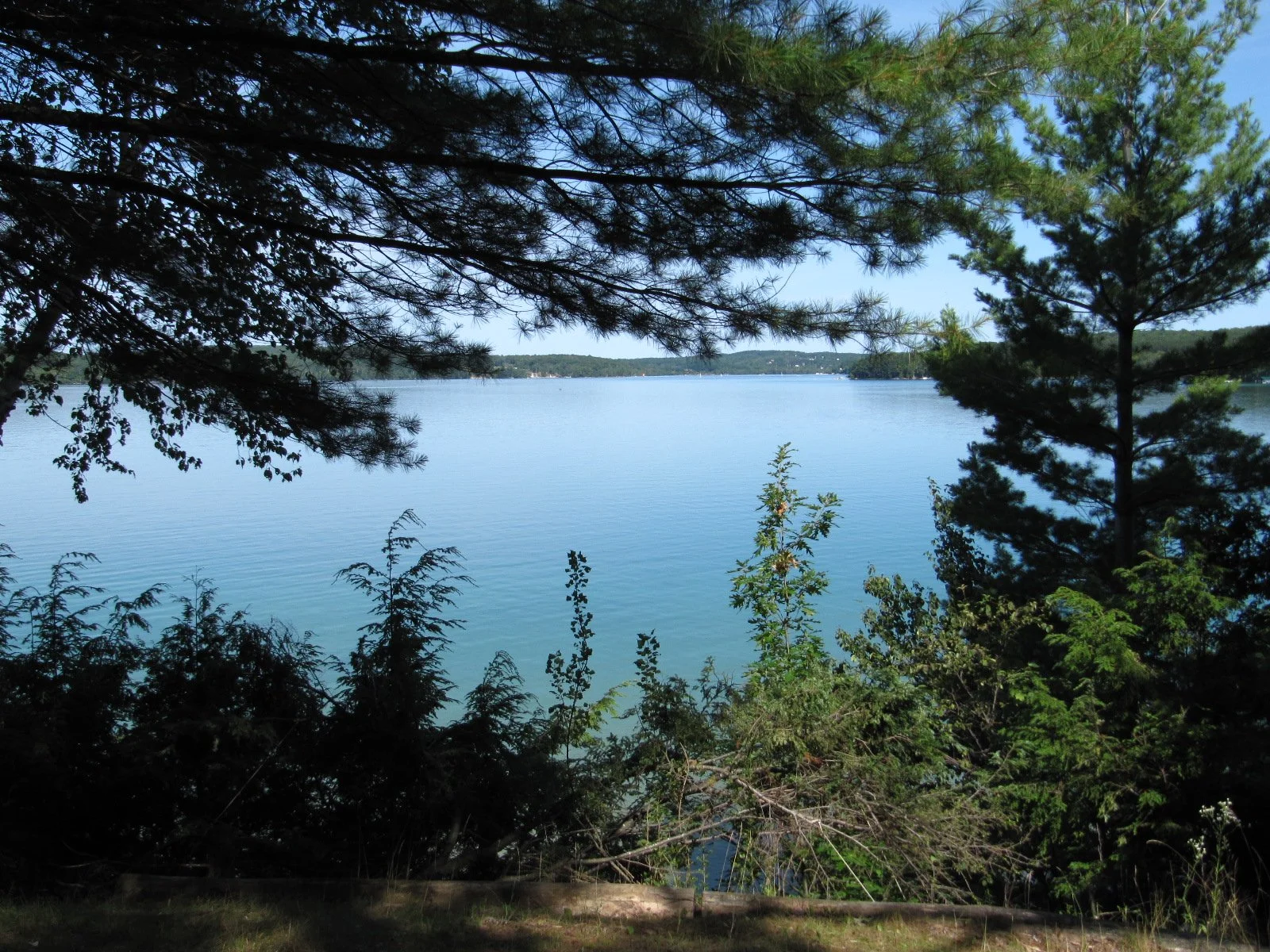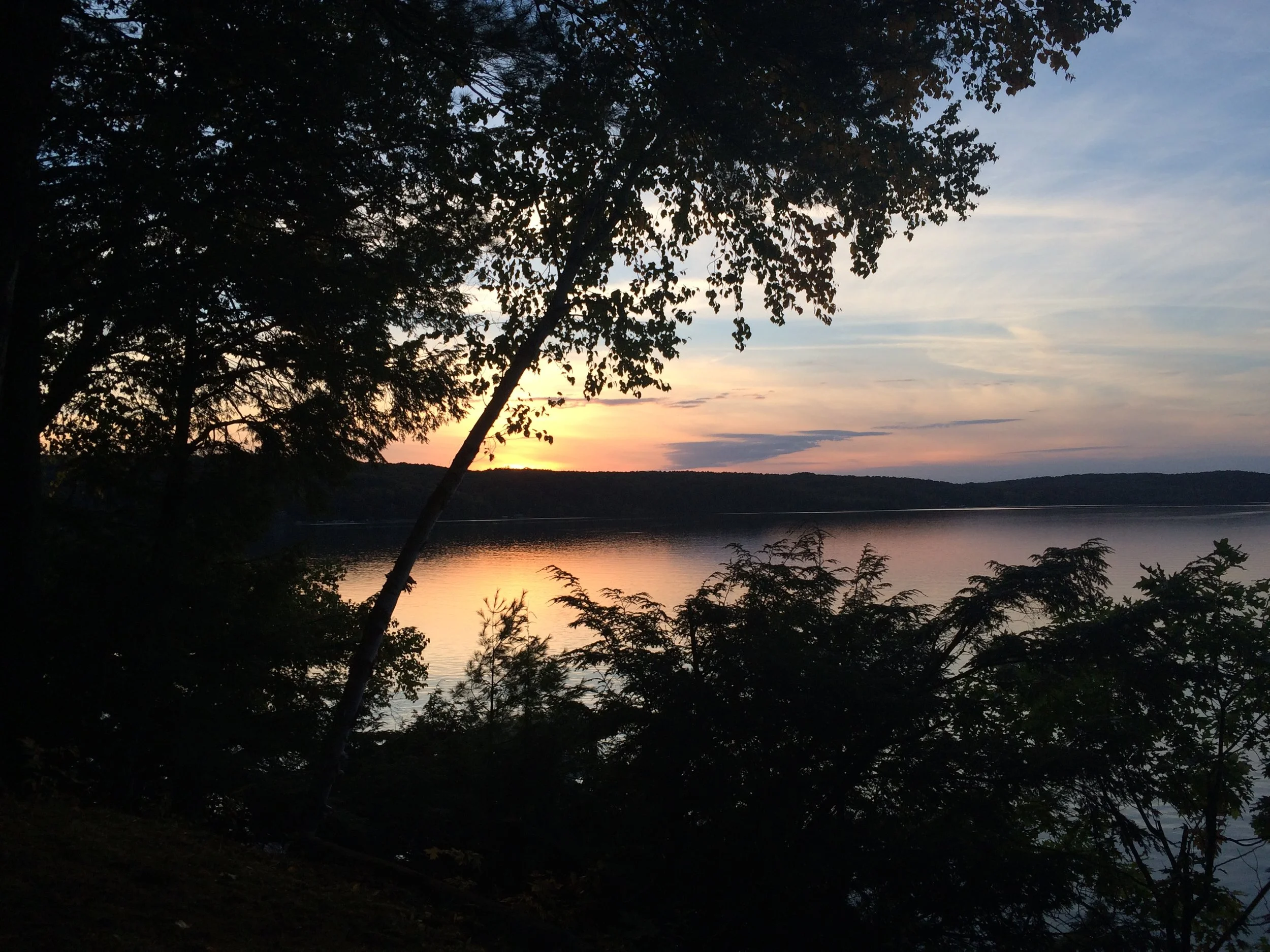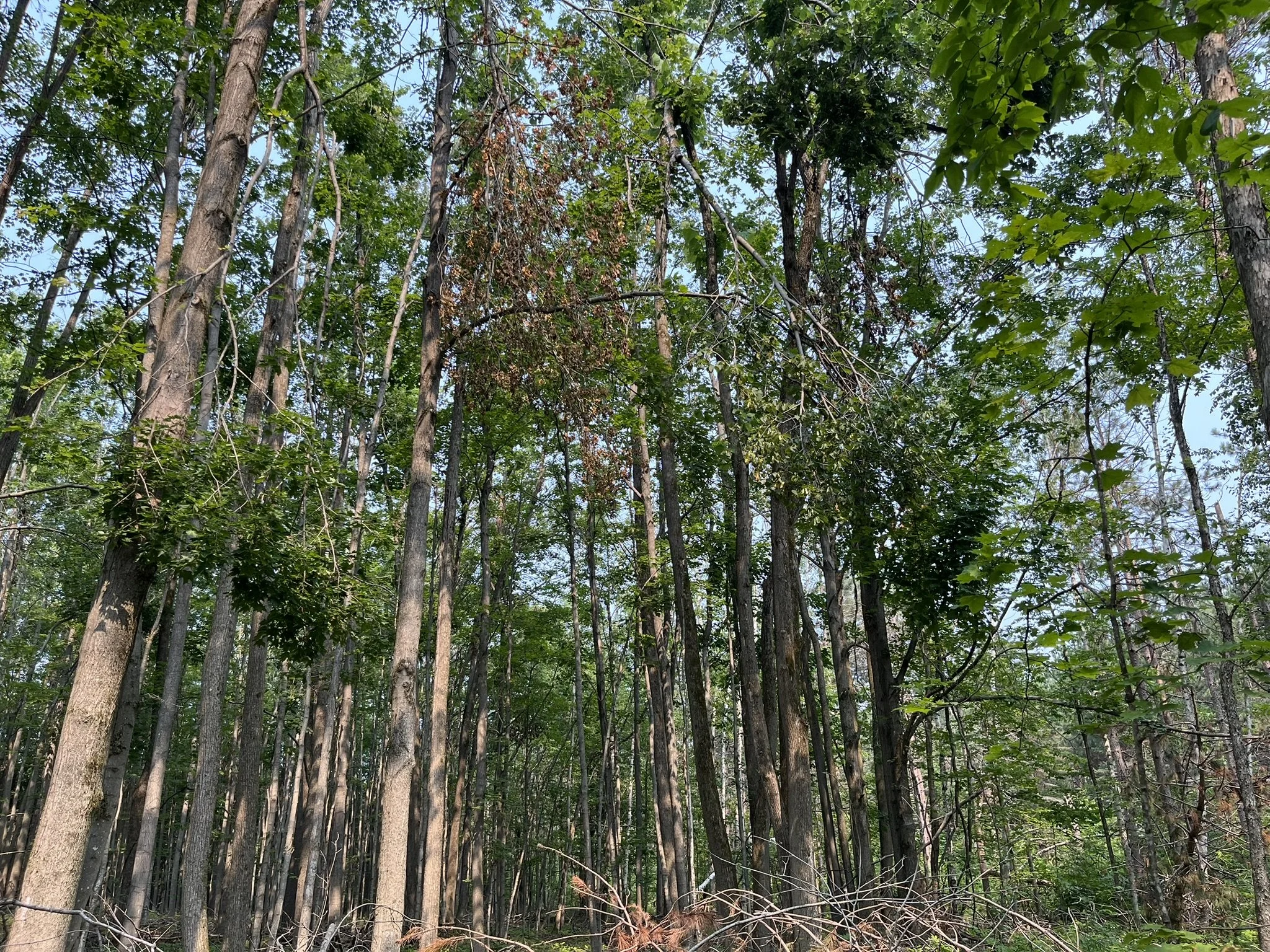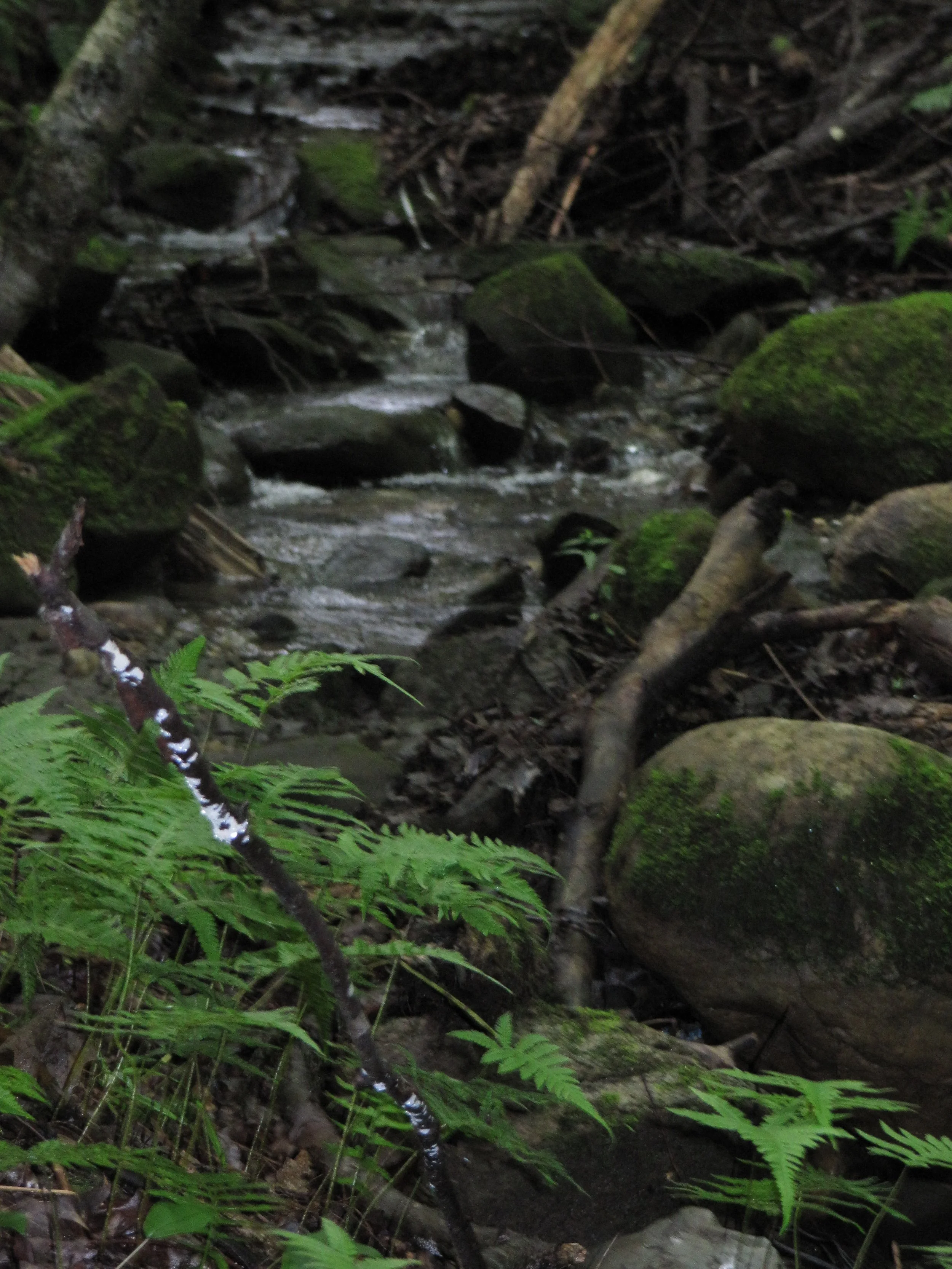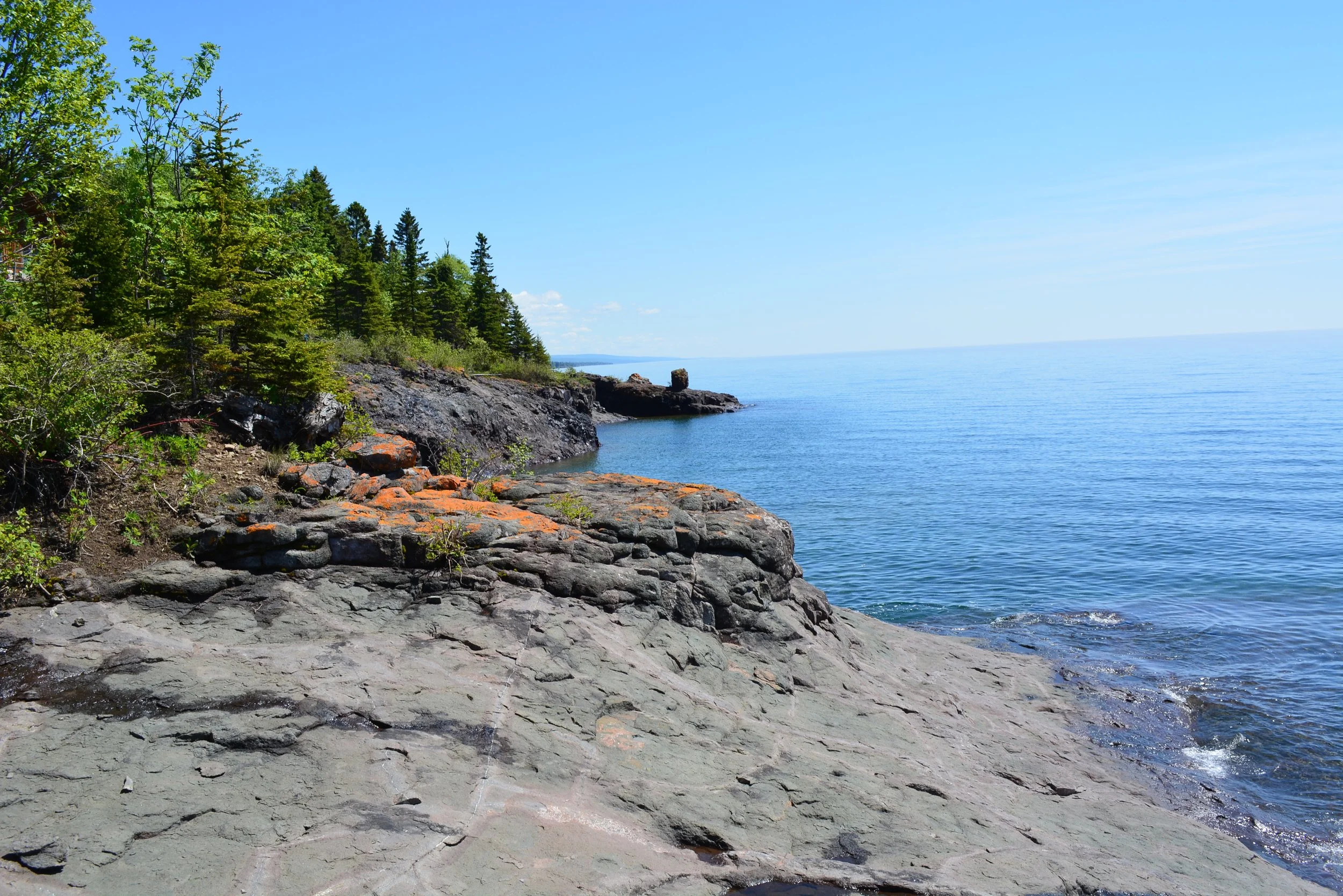As I paddled the lake in the early morning, I found myself thinking this is what the end of the world looks like. The sun was rising red through smoke from Canadian wildfires and a dull haze engulfed the lake to the point that I could barely see the not-too-distant opposite shore. I was paddling by the state forest, where the March ice storm had stripped the tall pines of their upper branches, bent the birches, and uprooted and sent out to sea the largest of the pines. The camping spot at the spring was inaccessible so covered was it by downed trees and branches. All was bent, broken, and dying and the forest itself appeared to be weeping. Adding to the surreal aspect of this moment was the plethora of motorboats pulling skiers and jet skis bouncing along on what would otherwise be a quiet, calm lake – oblivious to or simply not caring that they were frivolously burning the very fossil fuels that had fueled this environmental crisis and catastrophe. It was as if I were watching an Octavia Butler dystopia play out with the rich and privileged burning up the last of the fossil fuels on earth with utter disregard and disdain for the earth and any who cared for it.
I began going to this lake in northern Michigan when I was two. Every year my mother would comment on how blue the sky was, how clear the air – such a contrast to northeast Ohio where we lived with its rubber factories making the sky a hazy gray, even on the sunniest of days. We would marvel at the depth of the blue. This visit I never once saw a blue sky, nor even across the lake. I have hundreds of photos of the beautiful vista from the hill upon which our cabin sits, simply because of the stunning blues, but this year I took not a one.
Our family had a tradition of every evening sitting together on the hill to watch the sunset. Even if we’d gone out for dinner or even for a walk down the road, we had to get back in time for the sunset. We’d seen dozens, hundreds of gorgeous sunsets from that hill. But this time more often than not the setting sun was obscured by a thick bank of smoke near the horizon. At best, the sun appeared as a red ball just before disappearing into the smoke.
The old growth forest before . . .
A few days after my morning kayak, I headed to the old forest where I have always found such serenity amidst the tall trees, only to find that they, too, were mostly destroyed, bent, and broken.
. . . and after
A huge ice storm had hit the entire northern third of Michigan in the last days of March of this year, coating the trees with an inch of ice just before being hit by 70 mph winds. The heavily forested land lost thousands, millions of trees. The storm was called “historic,” “generational.” No one who had spent their lives in the area had ever seen anything like it.
I spoke with a local farmer who was mourning the loss of half of the trees in their woodlot, saying she wouldn’t see it returned to its vibrancy and beauty in her lifetime. But at that moment she was distressed by the poor air quality and how it was affecting her flowers and her crops. When I mentioned that I had noticed my dog having trouble breathing in the smoky air, she said she felt like an old dog, having to be out in it day after day at her farmstand. And if it was having this effect on her, what was it doing to the birds, she wondered.
I, too, had wondered how the birds were faring in this smoke. I had noticed the decrease in bird song in the woods around our cabin, but especially when paddling by the state forest which usually was alive with a joyful dawn chorus of peewees, warblers, tanagers, blue jays, and kingfishers. Now I saw only one kingfisher and one jay. The green heron that I’d seen for the past several years was gone. Where normally I would see two or three flocks of mergansers, generally with a dozen or more in the brood, now I saw just one with two little ones. Between the fire and the ice, they had lost both their habitat and the clean air they needed to breathe.
We now know the smoke is affecting the water as well. The smoke and ash deposit nutrients into the lakes, something they do not need. They also can result in more mercury being deposited into the lakes, creating concerns about its transformation into methylmercury, with its toxic effects on fish, in whom it bioaccumulates, and the humans and other animals who consume the fish.[i]
My thoughts returned to my morning’s paddle, where despite the thick smoky haze and the dead and dying trees strewn along the shoreline, the motorboats kept zooming by. Part of me wondered if they were among those feminist thealogian Carol Christ identified as believing in an apocalyptic vision that the world will come to an end as part of God’s will. What Christ called “the new fundamentalist movement” in 1987 is the very same Christian nationalism that has taken root in seats of power in the US government. Among its tenets is the belief that these are the End Times and the goal is to hasten the apocalypse and Christ’s return. While I mostly don’t believe these beliefs are influencing the environmental disregard of the jet skiers and water skiers at play, they certainly are apparent in the Trump administration’s dismantling of protections for the environment, of climate change mitigation policies, of calling for the lumbering of national forests, of ending the climate change research of the National Oceanic and Atmospheric Administration (NOAA), of dismantling the research branches of the EPA, of incentives to “drill baby drill,” and more. Trump’s recent paving over of the White House Rose Garden seems the final symbolic gesture of his contempt for all things living.
Back home in Minnesota, we’ve had a record number of air quality alerts – 32 so far this year. The air quality alert a week ago lasted seven days – the longest in the state’s history since they first began issuing alerts in 2008. But rather than challenging Trump administration policies when smoke from Canadian wildfires “made it difficult . . . to spend time outside recreating,” in an embarrassing, to say the least, move, our Congressperson, Pete Stauber, along with five other representatives from Minnesota and Wisconsin, wrote the Canadian embassy, blaming the Canadian government for the over four thousand fires burning in remote areas of Manitoba and Saskatchewan. They alleged the fires were caused by lack of “active forest management,”[ii] though the extreme number of fires are actually the result of climate change -- drought conditions combined with heat, wind, and an unusual number of lightning strikes due to climate-change induced changes in the jet stream. It is a classic case of shifting the blame, with the US and its destructive policies being the ones primarily responsible for the fire and ice, the floods and droughts, the toxic air and water the world over.
With this in mind, my initial question haunts me. Is this not merely the appearance, but indeed the actual end of the world – the end of bird song, of the beauty of sunsets and clear blue skies, of clean air, of forests and fruit trees and flowers? The many contributors to the brilliant anthology, What If We Get It Right?, argue that this need not be our future. As the editor, Ayana Elizabeth Johnson, notes in the Introduction, “We already have most of the climate solutions we need – heaps of them,”[iii] and the volume is full of them. According to the authors, and what is clearly apparent, what is most lacking in this moment is the political will to address climate change. It is up to us not to fall into despair, but rather to resist and proactively work to bring about a change in the political direction of this country.
Johnson argues that “we need something to aim for. Something with love and joy in it.”[iv] So, to end on a more hopeful note, I turn to Johnson’s vision, that is within reach if we can but grasp it, “if we get it right, the world is a lot more green, more full of life, . . . the combustion phase of humanity is over, . . . we have re-localized and we eat well; . . . our homes are comfortable; . . . there is no traffic in cities; coastlines are greener; . . . they tyranny of the minority is over; . . . we are out in the world; . . . the pace of life is more humane; . . . our surroundings are verdant; spring is not silent.”[v] May it be so.
Sources
Christ, Carol P. Laughter of Aphrodite: Reflections on a Journey to the Goddess. San Francisco: Harper & Row, 1987.
Historic ice storm cripples northern Michigan; 90,000 without power
Johnson, Ayana Elizabeth, ed. What If We Get It Right?: /Visions of Climate Futures. NY: Random House, 2024.
The Lakes are not okay: Wildfires Bring Long-Term Damage to Minnesota’s Waters - WDIO.com
Steingraber, Sandra. Having Faith: An Ecologist’s Journey to Motherhood. NY: The Berkley Publishing Group, 2001.
US lawmakers write to Canada to complain that its wildfire smoke is spoiling summer
[i] The anerobic bacteria present in lakes and streams convert inorganic mercury into toxic methylmercury. Minamata disease, caused by mercury poisoning from eating contaminated fish and seafood, was first identified in Japan in 1956. It causes ataxia, numbness in the extremities, and muscle weakness, and in extreme cases insanity, paralysis, coma, and death. In fetuses, it causes microcephaly and cerebral damage.
[ii] US lawmakers write to Canada to complain that its wildfire smoke is spoiling summer
[iii] Johnson, 3.
[iv] Ibid., 4.
[v] Ibid., 428-433.
